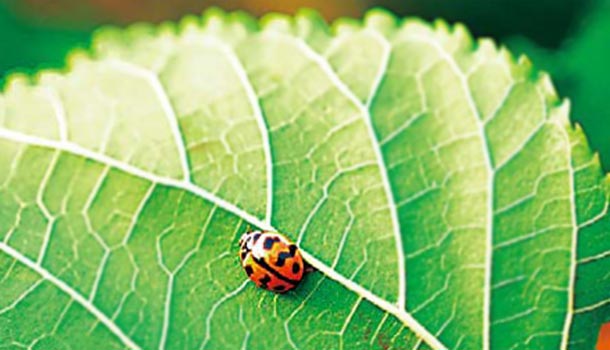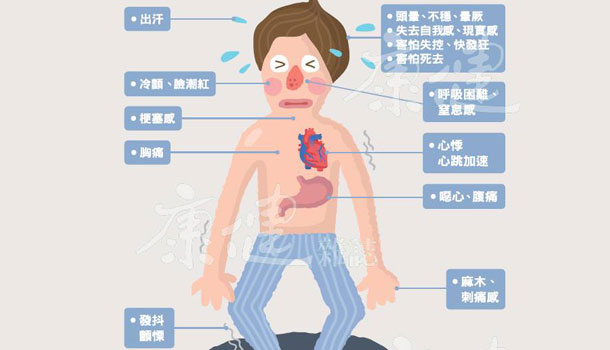
How to tell if you have dry eye
There are lots of reasons your eyes may feel dry at any given
time, including staring at the computer too long; a dry, windy day; and
allergies.
But if you have chronic eye symptoms that include burning, stinging or
itching (among others) you may have a condition called dry eye syndrome,
or keratoconjunctivitis sicca (KCS). In fact, one sign of KCS is
counterintuitive—excessive tearing or watery eyes—which is just one more
sign that there's an underlying problem with the lubrication of the
eye.
If you have chronic eye symptoms and one or more of the following
risk factors, you may have dry eye syndrome. Read on to find out how to
get the right treatment, reclaim your quality of life, and protect your
eyes from future damage.

You're getting older
Aging affects all parts of your body and the eyes are no
exception. Up to 30% of people over the age of 50 have dry eye, even
more in the 65-plus crowd. As you get older, your ability to produce
tears declines. This may be because your tear ducts have become
obstructed over time or because of inflammation, which can be a
byproduct of aging, says Janet Cushing, OD, a clinical optometrist at
the University of Wisconsin School of Medicine & Public Health in
Madison. Fortunately, dry eye as a result of aging (or any other cause)
doesn't have to be severe and, although it can affect quality of life,
it is also usually treatable.

You're on the pill, pregnant, or menopausal
Among the millions of Americans who have dry eye, the majority
are women. One of the main reasons is that after menopause, women just
don't produce as many tears. And women who have an early menopause (in
their 40s or younger) and develop dry eye run the risk of more damage to
the surface of their eye simply because they've had the eye condition
over a longer period of time. And it's not just menopause. Other
hormonal changes can have the same effect.
"Pregnancy, contraceptive use, and hormone replacement therapy [HRT] can all cause dry eye," says Cushing.
HRT is not as commonly used to treat menopausal symptoms as it was in
the past due to a higher cancer risk, but combined estrogen and
progesterone carries a much lower risk of dry eye than estrogen alone.
(Because estrogen alone can raise the risk of endometrial cancer, it's
usually reserved for women who have had a hysterectomy.)

ou have an autoimmune disease
Dry eye is associated with several different autoimmune disorders, including
lupus,
rheumatoid arthritis,
scleroderma, and Sjögren's Syndrome. In Sjögren's Syndrome, the immune
system attacks the glands that make both tears and saliva, resulting not
only in dry eye, but dry mouth as well. Autoimmune diseases can also
cause imbalances in the three main components of tears: oil, water, and
mucus. Any changes in tear composition can lead to dry eye.
Thyroid eye disease, also known as Graves' eye disease, is another
autoimmune disorder. This time the immune systems attacks not only the
thyroid gland but also muscles and tissue surrounding the eye. Dry eye
is one result of the condition.
If you have one of these disorders, make sure it, and the dry eye, are treated.

You spend too much time on the computer
Yet another reason not to stay glued to the computer (or video
game or Smartphone) for too long: It can cause your eyes to dry out.
Why?
“Using the computer significantly decreases the blink rate and that’s how you lubricate your eyes,” says Cushing.
Blinking, which happens an average of 10 to 15 times a minute
(roughly every four seconds), keeps the eyes moist with the proper
balance of tears, oil, and mucus.
Blinking less often means tears evaporate more quickly. This can also
occur with other activities involving intense concentration and focus
such as reading, driving, or even sewing.

You've had eye surgery
Almost all people who undergo LASIK surgery to correct their vision will experience dry eye at least for a while.
"With LASIK, there is damage to the surface of the eye that can
affect tear production," says Cushing. "Part of it is probably because
nerves are cut and they are part of what tells the eyes to produce
tears. It's like a feedback mechanism."
Fortunately, this type of dry eye is usually mild and only lasts
three to six months. Still, it's important to get proper treatment as
treating the dry eye will make sure the LASIK procedure is as successful
as possible.
Dry eye can also result from other surgeries that affect the cornea
(as LASIK does) and even from cosmetic surgery that involves the
eyelids.

ou wear contact lenses
Many people also have dry eye
before LASIK surgery,
probably as a result of long-term contact lens use to correct the
underlying vision problem. Contact lenses interfere with the layer of
tears that normally covers and protects the surface of your eyes. This
can cause tears to evaporate, leaving your eyes burning or feeling
gritty. Wearing your lenses for shorter stretches of time or switching
to another type of contact lens may help. Proclear disposal lenses claim
to actually attract water to the eye. Or you could wear glasses more
often or go for LASIK surgery. Even though dry eye is a side effect of
the surgery, it's usually only a temporary one.

You take medications that up your risk
A wide variety of medications, both over-the-counter and
prescription, have labels that note dry eyes as a potential side effect
because they can decrease tear production. Some of the primary culprits
are various blood pressure medications (diuretics and beta-blockers),
sleeping pills, antidepressants, anti-anxiety drugs, painkillers,
antihistamines and decongestants as well as some medications used to
treat
acne and Parkinson's
disease. If you're experiencing dry eye and you're on one of these
drugs, ask your doctor about switching to an alternative. If you can't
switch and need to use lubricating artificial tear eye drops (which are
available over-the-counter), talk to your doctor about how to use them
correctly. Try to avoid drops with preservatives, which may irritate
your eyes more than preservative-free drops.
Your environment is dry
Dry air, whether it's indoors or outdoors, can aggravate your
eyes. People who live in dry climates are more prone to developing dry
eye, as are people at high altitudes. One study found that only 9% of
participants at a lower altitude (about 700 feet above sea level)
reported having dry eye while 20% of those at a higher altitude (more than 10,000 feet above sea level) said they suffered from the condition.
Dry indoor environments can have the same effect. This includes
anywhere with air conditioning or heat, hospital environments, airplanes
and many work environments.
Other environmental irritants include wind, smoke, fumes from chemicals, and sunlight.
You have diabetes
If left untreated or uncontrolled,
diabetes
causes progressive damage to your nerves. Polyneuropathy, a common form
of diabetes nerve damage, can injure the network of nerves in more than
one part of the body, including the front layer of the eye, the cornea.
This interferes with tear production, causing you to blink less often,
which means tears evaporate more easily.
One study found that three quarters of people with both diabetes and
nerve damage had dry eyes, versus 44% of people with diabetes, but no
nerve problems, and less than 30% of people without diabetes. In all,
more than half of all people with diabetes have dry eyes.
Once nerve damage has happened, there's little you can do about it.
The key is to prevent it beforehand is to control your blood sugar, and
treat the dry eye with over-the-counter or prescription drops if you
develop the condition.
You have a vitamin A deficiency
Not enough
vitamin A
can also lead to dry eyes, although this is more common in developing
parts of the world. This is relatively easy to fix as the nutrient is
found in many foods—leafy green vegetables like broccoli; orange-colored
vegetables like
sweet potatoes, carrots and pumpkin; and liver.
Other aspects of a healthy diet can be critical to eye health.
Studies suggest that omega-3 fatty acids may reduce symptoms of dry eye.
The compounds are found in fish (especially salmon and sardines), and
walnuts. Here are
the right (and wrong) ways to get your omega-3 fatty acids.
You have allergies
Allergies and dry eyes are practically synonymous, and the fact
that the prevalence of dry eye closely mirrors the appearance of pesky
seasonal allergens proves it. One study found that dry eye was most
common in the spring and especially April, the same time pollen counts
were highest. (Dry eye also peaked in the winter, though the authors
speculated this had more to do with indoor heating.)
Unfortunately, many
allergy medications
also cause dry eye so if you're prone to this affliction, you may need
to find other ways to protect yourself. Try wearing wraparound glasses
when gardening or working in the yard or, if you are inside your house,
use an air filter. For more tips check out
How to Stop Allergies at Home.

































